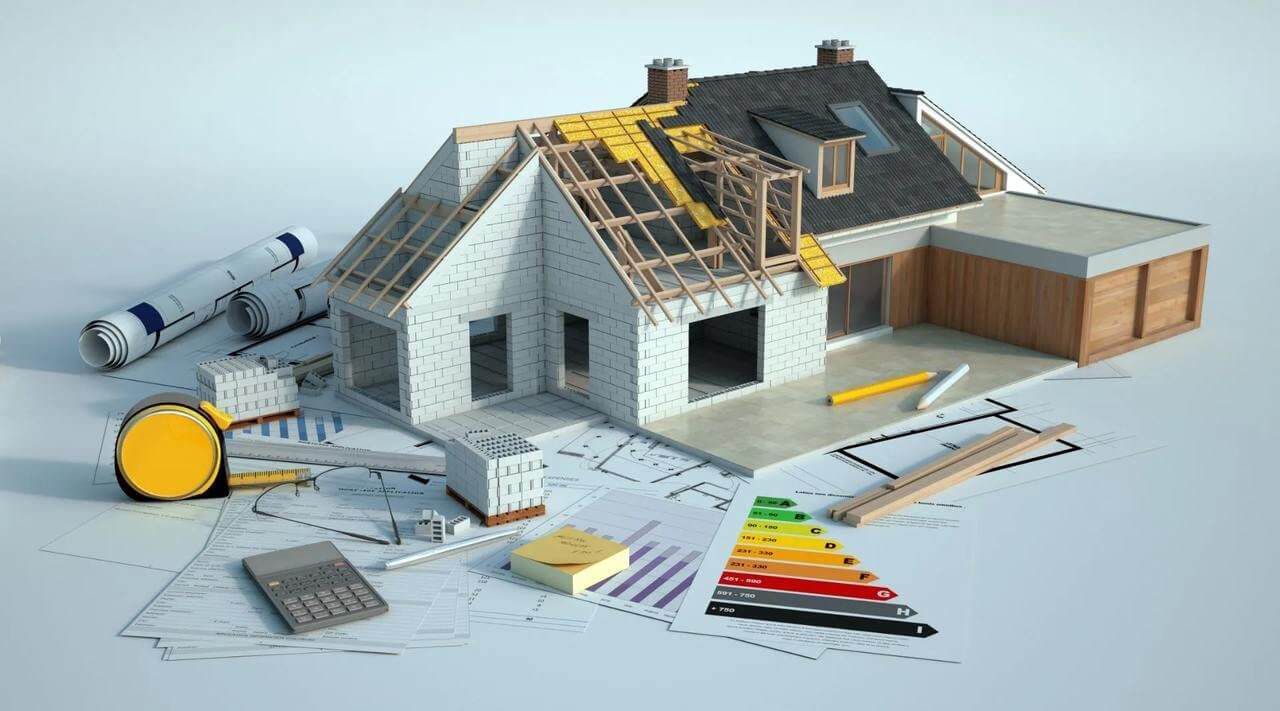Real Estate Market Trends: How the Economy Plays a Role
Gio Garcia Real Estate is a premier real estate agency based in Las Vegas, Nevada, specializing in providing exceptional services to buyers, sellers, and investors. Led by Giovanny Garcia, a licensed realtor with over seven years of experience, the agency is known for its innovative approach, unparalleled customer service, and deep community involvement.
Top Three Services:
- Spanish-Speaking Realtors
The agency offers bilingual real estate services, ensuring clear communication and personalized support for Spanish-speaking clients throughout their real estate journey.
- Listing Agent Services
Gio Garcia Real Estate provides expert guidance in marketing and managing property listings, helping sellers attract potential buyers and secure optimal deals efficiently.
- Creative Financing Solutions
The agency specializes in offering innovative financing options tailored to diverse client needs, making property ownership and investment more accessible and affordable.

Are you trying to figure out if now's a good time to buy a house? Or maybe you're wondering if you should sell your property or hold onto it a bit longer? Understanding real estate market trends isn't just important for big investors—it matters for everyday homeowners too. The housing market doesn't exist in a bubble. It moves up and down based on what's happening in the broader economy.
Understanding Today's Housing Market
The real estate market in 2025 looks quite different from just a few years ago. After the wild ride of pandemic-era buying frenzies and historically low interest rates, we're now seeing a more balanced but challenging landscape.
Key Factors Shaping Current Real Estate Trends
Today's housing market is being shaped by several major forces:
- Shifting interest rates that affect how much house buyers can afford
- Remote work patterns that continue to influence where people choose to live
- Construction costs that impact new home availability
- Generational buying patterns as millennials enter prime homebuying years and baby boomers consider downsizing
Many buyers feel caught between wanting to own a home and facing the reality of higher monthly payments. This tension is creating both challenges and opportunities depending on your situation and location.
"The market today requires more patience and strategy than during the buying rush of 2021," says Mark Chen, a real estate analyst. "Buyers and sellers both need to understand their local conditions rather than just following national headlines."
Regional Market Variations Across the Country
One thing that's crystal clear in today's market: your zip code matters more than ever. While national trends provide useful context, local factors often tell a different story:
- Coastal cities continue to face affordability challenges, though price growth has slowed
- Midwestern markets offer relative stability and better value for first-time buyers
- Sunbelt regions still see strong demand but at a more sustainable pace than recent years
- Rural and small-town markets near amenities remain attractive for remote workers
For example, while San Francisco's market might be cooling slightly, cities like Columbus, Ohio, and Nashville, Tennessee, continue to see healthy growth due to their job markets and relative affordability.
Economic Indicators That Drive Real Estate Markets
To truly understand where housing is heading, you need to watch several economic signals that directly impact real estate.
Interest Rates and Mortgage Affordability
Nothing affects home buying power quite like interest rates. When rates rise even a single percentage point, it can add hundreds of dollars to a monthly mortgage payment.
For example, on a $350,000 home with 20% down:
- At 4.5% interest: $1,419 monthly payment
- At 5.5% interest: $1,590 monthly payment
- At 6.5% interest: $1,770 monthly payment
Those differences add up fast. A buyer who could comfortably afford a house at lower rates might be priced out entirely when rates climb. This explains why housing market activity often slows when rates rise and accelerates when they fall.
Recent Federal Reserve policies have created a higher-rate environment than many buyers were used to, though rates have begun stabilizing. Experts believe we may be reaching a balance point where both buyers and sellers are adjusting to the new normal.
Employment Rates and Income Growth
Jobs and wages form the foundation of housing demand. Strong employment numbers and rising incomes typically lead to healthier housing markets. When people feel secure in their jobs and see their earnings increase, they're more likely to make major purchases like homes.
Currently, the job market has shown resilience despite economic uncertainties. However, income growth hasn't kept pace with housing costs in many regions, creating affordability challenges. This gap between housing costs and income growth is one of the biggest factors limiting market activity in some areas.
First-time buyers especially feel this pinch. Many are taking longer to save for down payments or looking at more affordable housing types and locations than previous generations.
Inflation's Impact on Housing Prices
Inflation affects housing in several key ways:
- It increases the cost of building materials, driving up new home prices
- It pushes up rents, which can make buying more attractive by comparison
- It erodes purchasing power, making saving for down payments harder
- It influences interest rate decisions by the Federal Reserve
In recent years, inflation has been a major economic story. While general inflation has begun moderating, housing costs remained stubbornly high in many markets through 2023 and 2024.
The silver lining? Real estate has historically been considered a good hedge against inflation since home values and rents tend to rise along with other prices. This makes property ownership attractive during inflationary periods for those who can afford to buy.
Housing Supply and Demand Dynamics
The balance between housing supply and buyer demand is fundamental to understanding price movements.
New Construction Trends
The U.S. has faced an underbuilding problem for years. After the 2008 housing crash, new home construction never fully recovered to meet population growth. Recent building has increased but still faces challenges:
- Labor shortages in construction trades slow project timelines
- Higher material costs make budget-friendly homes harder to build profitably
- Zoning restrictions in many communities limit where and what can be built
- Land costs in desirable areas drive up new home prices
Builders are adapting by focusing more on multifamily projects and smaller single-family homes that can be built more efficiently. Some innovative companies are exploring modular and factory-built housing to reduce costs and speed up construction.
"We're seeing more creativity from builders trying to deliver homes at attainable price points," explains Sara Johnson, a housing economist. "The days of focusing primarily on larger luxury homes are shifting as builders recognize the massive demand at lower price points."
Existing Home Inventory Challenges
The inventory of existing homes for sale has been historically low in many markets. Several factors contribute to this:
- Homeowners with low mortgage rates are reluctant to sell and take on higher-rate loans
- Longer homeownership periods as people stay in homes for 10+ years versus the historical 7-year average
- Investor purchases have converted many potential resale homes into rentals
These inventory constraints have kept home prices from falling significantly despite affordability challenges. In some markets, well-priced homes still sell quickly even with higher mortgage rates.
Smart Property Investment Strategies for Today's Market
With changing market conditions, investment approaches need adjustment too.
Long-term vs. Short-term Investment Approaches
The days of quick house flips for easy profits have largely passed in most markets. Today's conditions favor patient investors with longer time horizons.
Long-term real estate investing strategies worth considering include:
- Buy-and-hold rental properties in growing areas with strong job markets
- Value-add investments where improvements can boost property values beyond market appreciation
- House hacking where owners live in one unit while renting others to offset costs
- Real estate investment trusts (REITs) for those wanting real estate exposure without direct ownership
Short-term strategies haven't disappeared entirely but require more caution and market knowledge. The margin for error is smaller with higher carrying costs from elevated interest rates.
"The best real estate investments today are made with a minimum five-year horizon," advises financial planner Rick Torres. "The market will have ups and downs, but quality properties in good locations tend to reward patience."
Diversification in Real Estate Portfolios
Smart investors aren't putting all their eggs in one basket. Diversification within real estate can include:
- Investing across different geographical markets
- Mixing property types (residential, commercial, industrial)
- Balancing higher-risk/higher-reward opportunities with stable income producers
- Using different investment vehicles (direct ownership, partnerships, REITs, crowdfunding)
This diversification helps protect against regional downturns or challenges in specific property sectors.
Housing Market Forecast: What to Expect
While no one has a crystal ball, certain trends provide clues about where markets are heading.
Short-term Predictions for Buyers and Sellers
For the remainder of 2025, housing experts generally expect:
- Gradual price growth in most markets, though at slower rates than the pandemic boom
- Slowly improving inventory levels as more homeowners decide to move despite rate concerns
- Continued affordability challenges for first-time buyers in high-cost areas
- Possible interest rate adjustments that could stimulate more market activity
The coming months likely won't bring dramatic changes but rather continued adjustment to the new normal of higher financing costs balanced against strong housing demand.
Buyers may find slightly better conditions with more choices and less frenzied competition. Sellers won't see the multiple-offer bidding wars of recent years but should still find ready buyers for well-priced, well-maintained homes.
Long-term Real Estate Growth Factors
Looking further ahead, several fundamental factors support long-term housing demand:
- Population growth continues to create need for new housing units
- Household formation as young adults eventually enter the market
- Limited land availability in desirable areas constrains supply
- Replacement needs as older housing stock becomes obsolete
These underlying factors suggest that despite short-term fluctuations, the long-term trend for housing values remains positive in most regions.
Technological Influences on Future Markets
Technology is changing real estate in ways that will impact future markets:
- Virtual and augmented reality making remote property viewing more effective
- Smart home features becoming expected rather than luxury additions
- Climate technology affecting home design and energy requirements
- Construction innovations potentially making building more efficient
These advancements could change which properties command premium prices and how homes are marketed and sold.
Demographic Shifts Affecting Housing Needs
America's changing population will reshape housing demands:
- Aging baby boomers seeking accessible, lower-maintenance homes
- Millennials starting families and looking for different features than when they were younger
- Increasing diversity bringing varied cultural preferences in home design and location
- Remote work flexibility continuing to influence where people choose to live
Communities that adapt to these shifting needs will likely see stronger housing markets than those that don't.
Preparing for Market Changes: Practical Tips
Whatever your real estate goals, preparation improves your chances of success.
Strategies for First-time Homebuyers
If you're looking to buy your first home in today's challenging market:
- Build your credit score aggressively to qualify for better rates
- Look beyond traditional down payment sources to programs, grants, and family assistance
- Consider starting with a condo or townhouse if single-family homes are out of reach
- Explore emerging neighborhoods where prices haven't yet peaked
- Be ready to compromise on size or features to get into the market
Many successful first-time buyers are partnering with family members, looking at homes that need work, or starting with investment properties rather than dream homes.
"The path to homeownership looks different today," notes housing counselor Maria Diaz. "First-time buyers who adjust their expectations and get creative are still finding ways to build equity."
Advice for Property Investors
For those looking to build wealth through real estate:
- Focus on cash flow rather than speculation in today's higher-rate environment
- Budget for higher vacancy and maintenance costs than in recent years
- Look for properties with improvement potential that other investors might overlook
- Build relationships with local tradespeople to complete renovations cost-effectively
- Study local regulations as rental rules are changing rapidly in many communities
The best investors are adapting to changing conditions rather than applying strategies that worked in previous markets.
Considerations for Home Sellers
If you're planning to sell in the near future:
- Make strategic improvements that bring returns rather than personalizing
- Price realistically based on recent comparable sales, not what neighbors got last year
- Consider timing relative to local market patterns and seasonal demand
- Prepare for longer selling timelines than during the pandemic boom
- Look at your next purchase before selling to understand your full financial picture
Many successful sellers today are focusing on presenting move-in ready homes that appeal to buyer concerns about affordability and rising renovation costs.
Balancing Today's Realities with Long-Term Opportunities
Real estate remains a powerful wealth-building tool and vital part of many financial plans. While current market conditions present challenges, they also create opportunities for prepared buyers, sellers, and investors.
The key is understanding how broader economic forces affect your local market and your specific situation. By watching economic indicators, staying informed about regional trends, and working with knowledgeable professionals, you can make confident real estate decisions regardless of market conditions.
Remember that real estate is typically a long-term investment. The day-to-day news headlines matter less than fundamental factors like population growth, job opportunities, and quality of life in your target area.


















